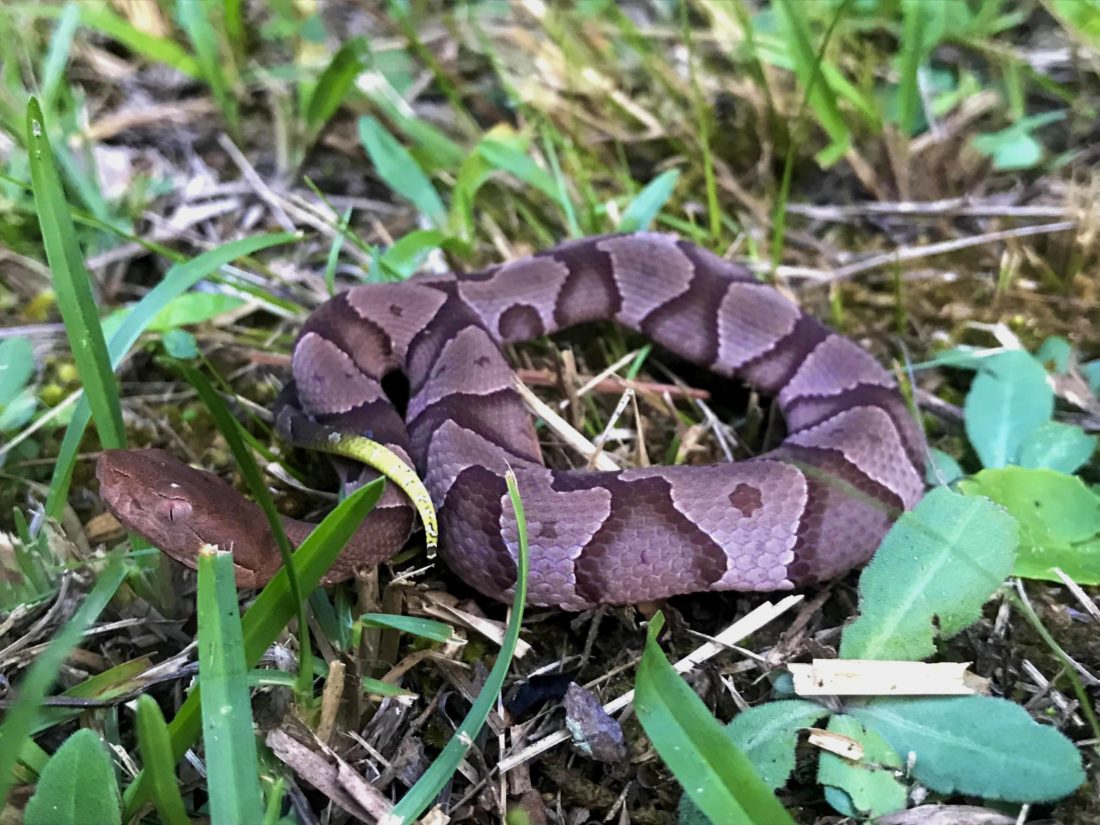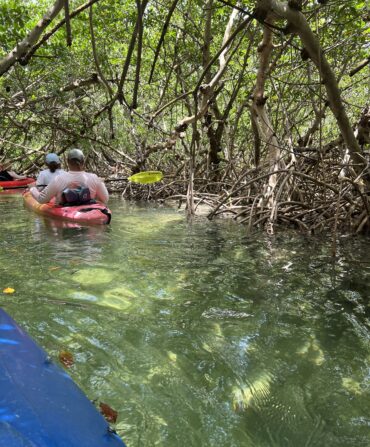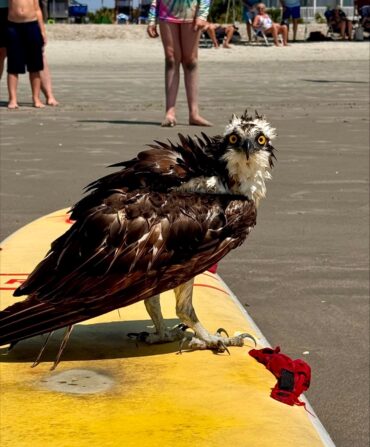During September and into early October, copperheads are born all over the South, meaning it’s a time to be careful around the yard and keep an extra eye on curious pups. Baby copperhead numbers vary from year to year but can spike after a periodical cicada emergence, which puts us on track for a normal year (but watch out in 2024; there are two broods coming up for hungry snakes to feed on). Copperhead bites are the most common snakebites in the U.S., and though they are almost never fatal, the severe swelling and bruising will land you in the emergency room. Here’s what to know about the feisty little vipers, according to Ben Morrison, a South Carolina–based herpetologist who works for the Amphibian and Reptile Conservancy.
Identification Is Key
Copperheads, as the name suggests, have a golden-brown head that, paired with their unique pattern, makes them easy to differentiate from other snakes. “I would say the biggest thing is looking for darker-colored hourglass shapes on the body,” Morrison says. “There’s really no other snake around that has this color and pattern.” It’s a better indicator than following the old adage about triangular heads, as nonvenomous snakes (including water snakes) can in fact have triangle-shaped heads. (Snakes themselves seem to be aware of this myth; some, when threatened, can flatten their heads to look triangular.)
Despite their venom, very few young copperheads make it to adulthood; soon after birth, they are picked off by everything from birds to bullfrogs. To aid with foraging in the first and most difficult year of their lives, baby copperheads have a secret weapon: a bright green tail that looks just like a worm. Later, they’ll rely on ambushing, but when they are so small they can’t yet go after larger prey, wiggling their green tail helps them bait small amphibians and reptiles.

Mind the Likely Habitat
Copperheads are ovoviviparous, meaning the mother carries the eggs inside her until the babies hatch and are then born live. Usually, there are around eight babies in a clutch, and mothers conceal their dens in places like tree stumps or rocky areas. Once born, the babies soon disperse and make their own way. In your yard, it’s best to be cautious around things like wood piles, grass clippings, stone walls, sawdust piles, or similar areas with lots of potential cover. “You can always wear thick gloves while doing yard work, and just look where you’re putting your hands,” advises Morrison.
In Case of an Encounter
If you do come across one, the best thing, of course, is to leave it alone. Copperheads, unlike rattlesnakes or cottonmouths, employ no defensive behavior prior to biting. “It’s really their only defense,” Morrison explains. “And young ones might be more likely to strike because they feel more vulnerable.” If you want the snake removed from your yard because you are worried about dogs or small children, Morrison recommends a Facebook group, Free Snake Removal Directory, where you can message someone local to come and ferry the snake to a safe location for both it and humans.
Busting a Myth
Popular belief holds that young copperheads are more dangerous than adults because they can’t control their venom. While it’s true that baby copperheads are more active and defensive than, say, comparatively chill rattlesnakes and might be more likely to bite than adults, Morrison says he’d rather be bitten by a young copperhead than a mature one. An adult snake can inject more venom, so there’s a chance of a much worse bite.
Still, Morrison advocates for coexisting peacefully with our poorly understood little neighbors, who, after all, provide a natural control for mice and rats and have more to fear than we do from an encounter. “We walk past them all the time and never know it,” he points out. “They are part of our landscape across the South, and I always think that the first thing people should do when they see one is admire it, and feel lucky.”
Also see: A G&G editor spends a day tracking diamondbacks








